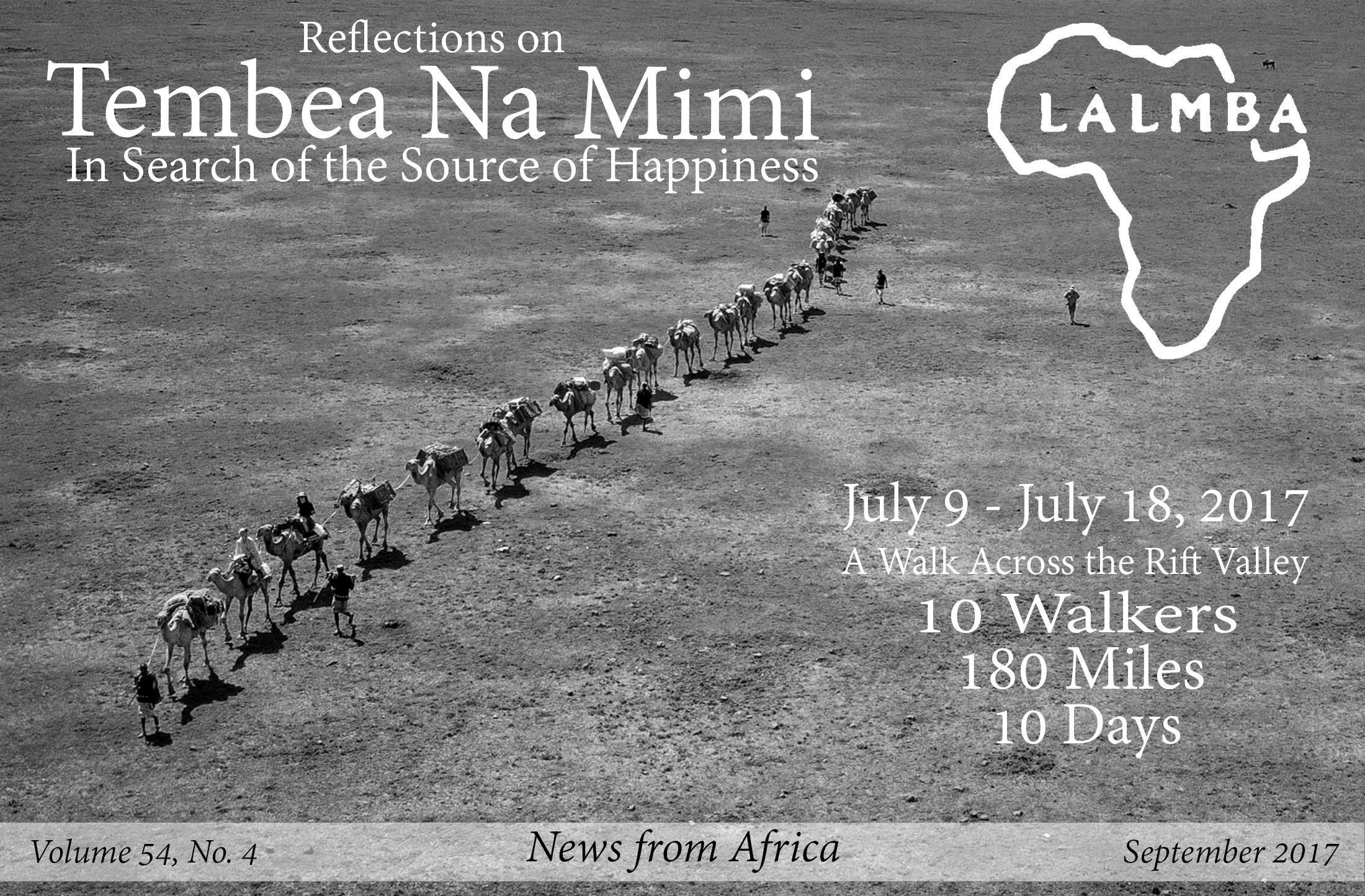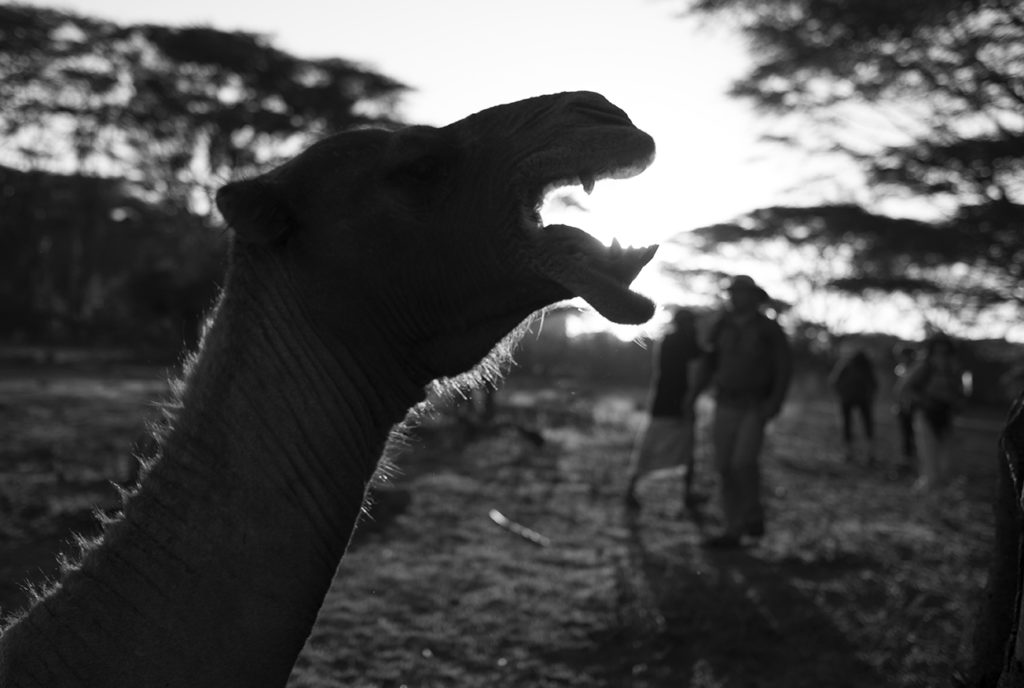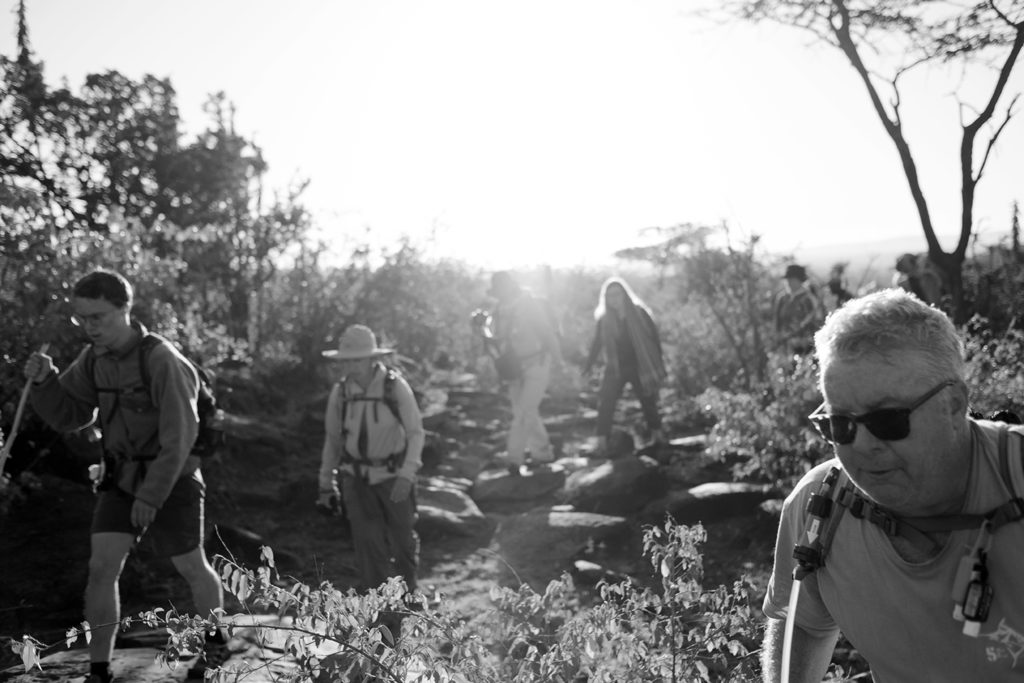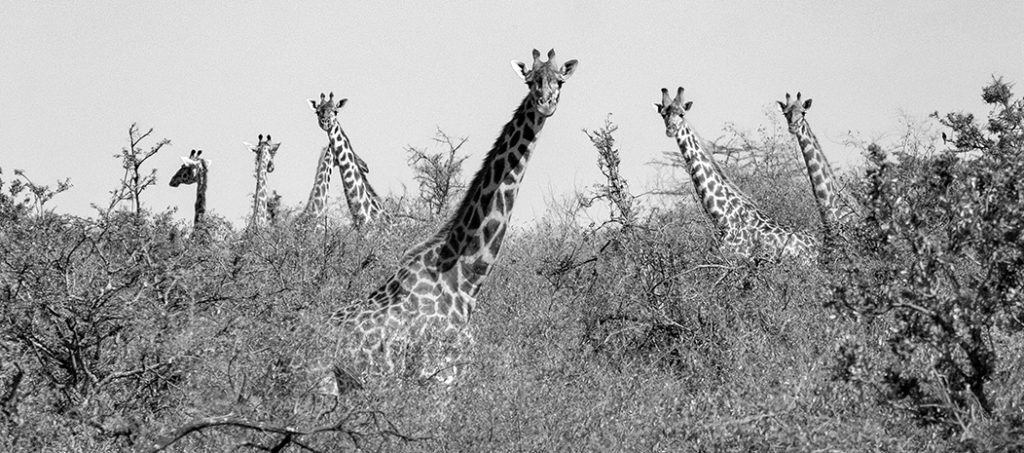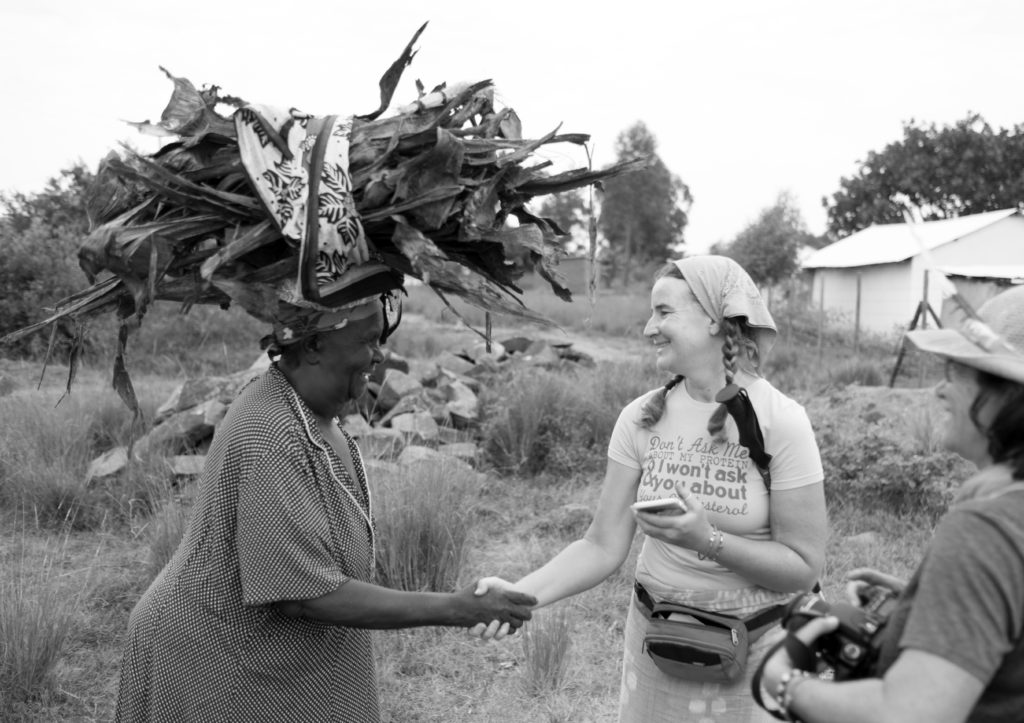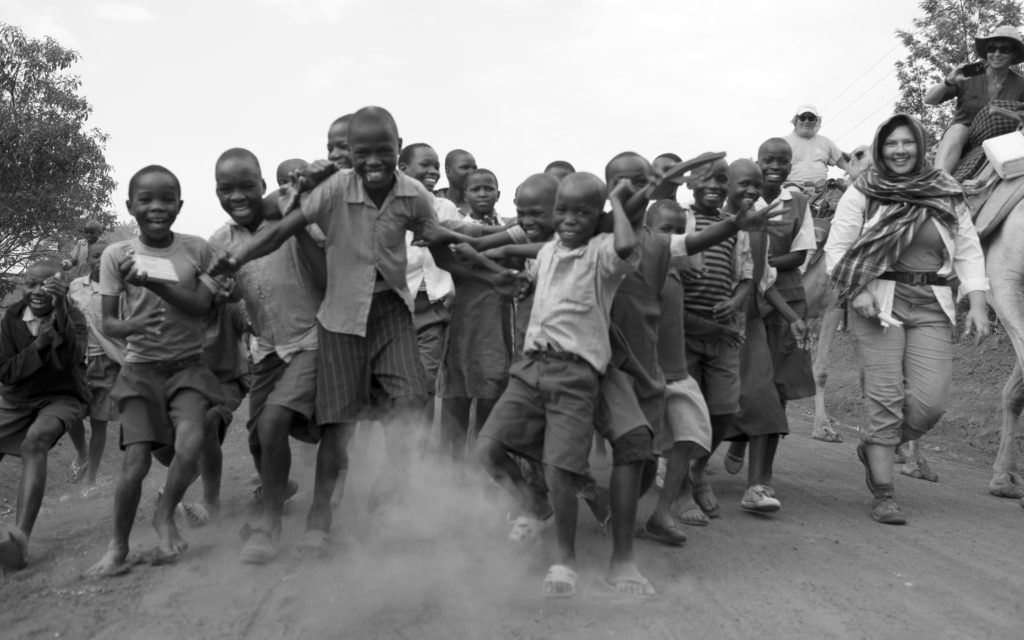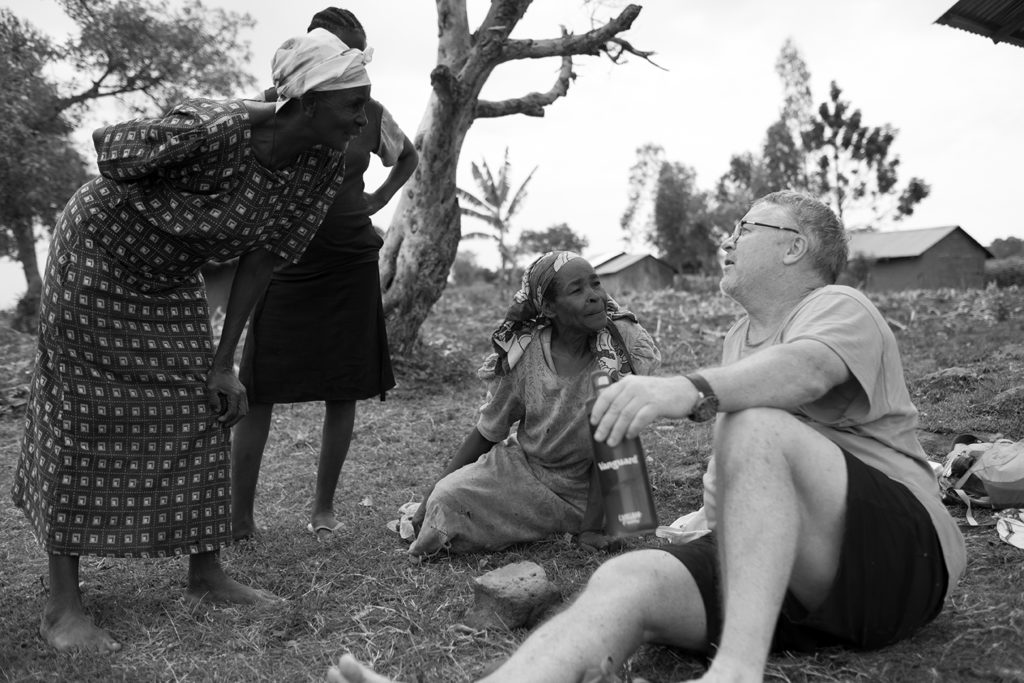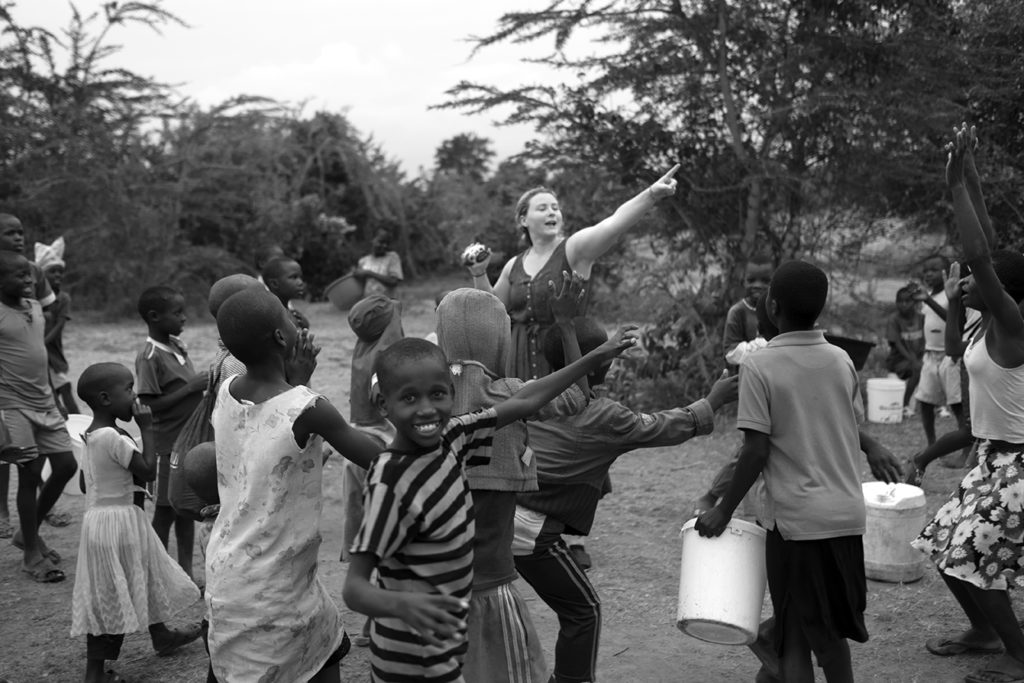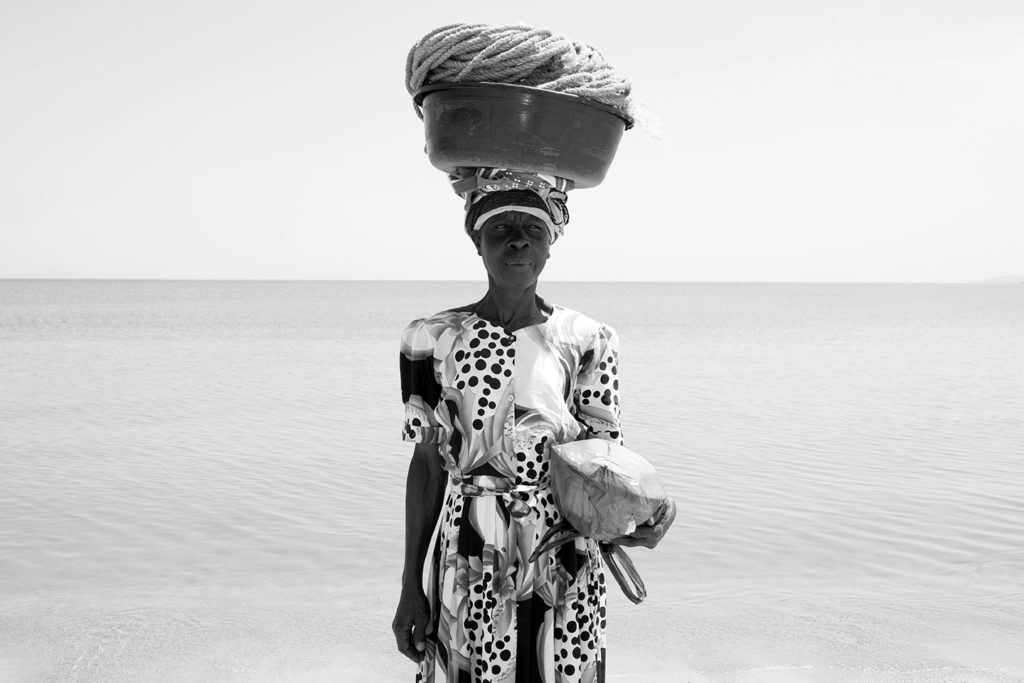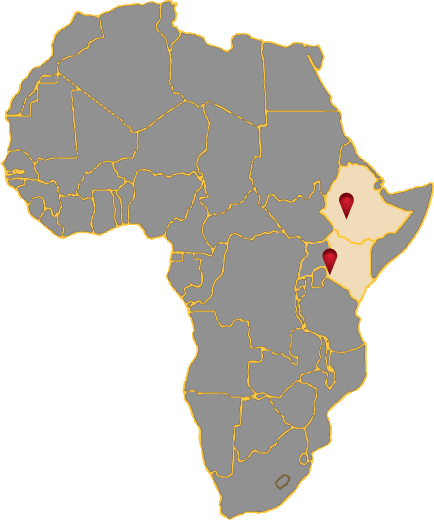by Jeff James
When I stepped onto the dirt road, an emotional plummet, a cocktail of anxiety and remorse, overtook me. It was a deep sadness that I couldn’t understand, like coming down off of an exhilarating manic episode. But I plodded along, trying to figure out why I felt so dejected, looking down at my feet as I walked, counting steps and getting lost in the repetitive scuffling sound they made over the dry, flat ground. Its flatness felt strange, and the walking almost too easy. When I lifted my head and looked east towards the Rift Valley – the beautiful, isolated swath of land we had just traversed – I felt an urge to turn back. So I stepped off the road, onto the shoulder where the ground was still uneven and thorn trees and scrub brushes made obstacles through which I could weave my body, rolling my feet over the lumpy and rocky ground. Almost immediately my mood lifted; I followed this indirect course parallel to the road, keeping an eye up ahead on my team of humanitarians who walked forward with unbreakable strides, just as they had during the previous 5 days, from the eastern plains to the western lip of the Great Rift Valley. The miles we covered were about 100 thus far, and the land as perfect as nature made it, absent of trails and roads, teeming with wildlife and risk. It was beautiful, and instinctively I knew I would miss it.
Those days in the Rift were blissful and formative. Before morning light, to the sounds of camels snarling, the fused smells of animal dung and last night’s rekindled fire mingling with the aroma of primordial earth, we pulled our bodies out of slumber and methodically got dressed, packing away tents and sleeping bags and other items unneeded until nightfall. Then, while the guides loaded our packs onto the backs of belligerent camels, we stood about our makeshift kitchen, often settled beneath a skeletal acacia tree, watching our benevolent leader, Amanda, putter about preparing breakfast.
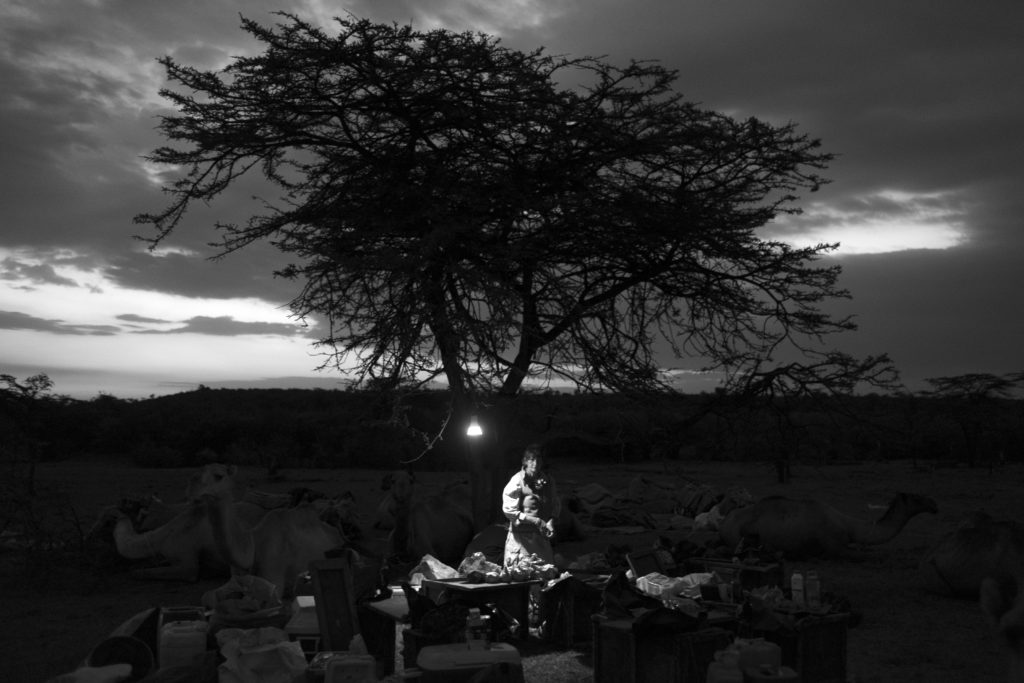
Routinely, we started the day by filling and treating our water containers, plastering our blistered feet, and gossiping about the night sounds. It was not unusual to hear lions roar or elephants trumpet. After all, we camped in their province! Most nights we’d hear the nearby whoop of hyenas, which caused us each a moment of private panic and recognition of the false security of our nylon tents. But we were there for that reason, to understand the precarious nature of life as introduced through risk and a conscious embrace of our innermost fears. Most foreigners don’t usually walk through the Masai Mara; they drive through it in long-based Land Cruisers, heads and telephoto lenses peering out of rooftops and windows, collecting snapshots of implied risk. But what we were doing was the real deal.
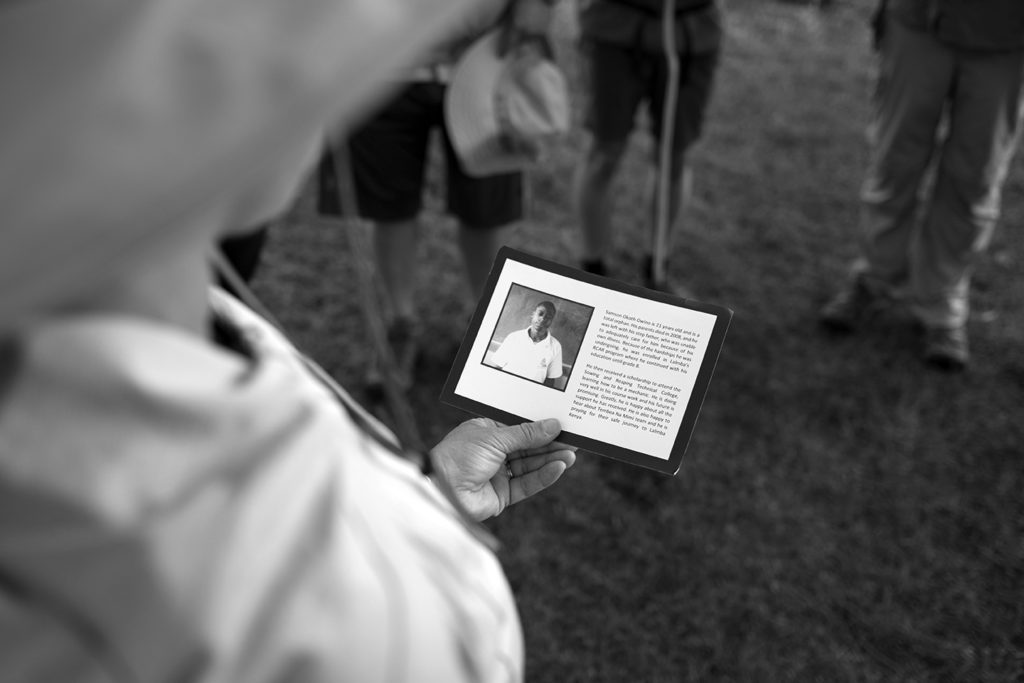 Before setting out each day, we’d huddle, the ten of us in a circle, and share a biographical reading of one person whose life had been affected by the services of Lalmba. We had ten cards to read, one per day, and we called them our inspiration cards. They told stories of orphans saved from lives of labor, now nourished and learning and dreaming of prosperous futures. And there were elders, men and women, who were alone in their final years, barely able to care for themselves after being robbed of their families by AIDS. And there were mothers as well, unskilled and widowed, struggling to provide for their children, but now running small businesses with the help of a microloan, and leading lives of self-reliance. These inspiration cards, the biographies they told, reminded us why we were there. They were a psychological tincture distilling though our minds as we walked, encouraging us to carry ourselves with dignity and strength. For no matter how great the pain or fatigue we felt throughout the day, our hardship was trivial in comparison, but our mission a noble one.
Before setting out each day, we’d huddle, the ten of us in a circle, and share a biographical reading of one person whose life had been affected by the services of Lalmba. We had ten cards to read, one per day, and we called them our inspiration cards. They told stories of orphans saved from lives of labor, now nourished and learning and dreaming of prosperous futures. And there were elders, men and women, who were alone in their final years, barely able to care for themselves after being robbed of their families by AIDS. And there were mothers as well, unskilled and widowed, struggling to provide for their children, but now running small businesses with the help of a microloan, and leading lives of self-reliance. These inspiration cards, the biographies they told, reminded us why we were there. They were a psychological tincture distilling though our minds as we walked, encouraging us to carry ourselves with dignity and strength. For no matter how great the pain or fatigue we felt throughout the day, our hardship was trivial in comparison, but our mission a noble one.
The mornings were quiet and cool as each daybreak we left a campsite behind, returning it to the wildlife we displaced for one quaint evening. We walked west towards Lake Victoria, the rising sun warming our backs and stretching our shadows ahead like ghosts of the early explorers, scouting our path to the source of the Nile. You couldn’t help but think about those brave adventurers, and imagine seeing these landscapes through their eyes. Burton and Speke, Stanley and Livingston were legendary figures who faced incredible dangers from wildlife, disease, and distrusting natives.
They must have been awestruck, like us, by the primeval beauty and the abundant and exotic wildlife that roamed so freely on these boundless savannahs. Indelible marks of the cycle of life littered the plains, the skeletal vestiges of the predator’s banquet, as many next courses lazily grazed nearby, seemingly unaware of our presence.
What more can be said about wildlife that isn’t already known? They’re beautiful in all their stripes and spots, curvy horns and elongated necks, their gallops and slow-motion runs reminiscent of their prehistoric relatives. Watching these animals roam freely was enchanting, walking through their habitats a precious reminder of the need for conservation, as well as a grim lesson in the horrors of our appetite to destroy perfect beauty. Of all the animals we saw, the rhino’s absence was most sadly poignant.
With those thoughts and experiences deeply set in our psyches, we passed our halfway point and left the nature conservancy, stepping onto a man-made road, leading us towards civilization.
As stated earlier, my immediate response was a fleeting, but deep despair. And the balm for that gloom was returning to the wildness which we had just left. At first those feelings baffled me, but now I understand them as a hermit might after leaving his precious solitude for the first time in many moons, or Mowgli leaving the jungle to live among “men.” Solitude in nature allows us to experience, if only subtly, what our primitive ancestors must have known, returning our minds and spirits to a time when survival required that we coexist rather than conquer land and beasts. Those days in the “bush,” as it’s called, forced us to tap into long dormant parts of our brains to navigate and problem solve complexities that are mostly irrelevant in the developed world – doing so made us feel more alive than we’ve felt in years. But all things pass, and our mission here was really to be among people. They – the destitute who struggle to find health care and work, the children who are hungry and uneducated – are whom we came to see, to walk with, and to serve. The nature we traversed fulfilled its purpose: It broke us down to the core of our humanity, so that when we entered through the figurative gates of each community our hearts were vulnerable, more open and able to feel the struggles of the people who ran to greet us.
Over the next 5 days, people of all ages met us along the roads and paths we walked, marveling at our caravan of foreigners and camels. Our cohort consisted of 10 North American fundraisers, 10 Kenyan guides, and 22 Somali camels to carry our food, water, and nighttime gear. Camels are rarely seen this far south of the equator. Our unique makeup of northern creatures and our sudden arrival in these rural villages stirred local emotions to the spilling point, sloshing delight beyond the rims of self-control. As their eyes and awareness set upon us, I saw smiles like none I’ve ever seen, supernovas of uncontained joy spreading across faces and radiating outward toward us. It was penetrating, and impossible not to smile back and feel that pure joy, an energy I haven’t felt or known since childhood. Thinking of it now as I write these words fills me with chills, and leaves me wondering what happened to the joy of my youth? How did its purity get diluted along the way? And how can it surface so easily in the people we encountered, people who have little apart from their poverty?
It’s true that money can’t buy happiness, but I’m convinced now, happiness is a wellspring that resides in the hearts of the destitute.
Unknown friends appeared by our sides as we walked, easily matching our pace and stride, sometimes staying with us for miles. Children wanted to hold our hands, and elders wanted to greet us and know our purpose. There were times when we were like a parade, with the masses leaving their work unfinished in the fields, and school children darting out of their classrooms just to meet us on the road and walk with us on our westward march. Late afternoons, when we broke for camp, crowds of people gathered to watch us settle into our nighttime routine – setting up tents and then sitting on our bottoms until sleep beckoned us away to our caves of isolation. We were physically tired after walking 20 miles a day, but our spirits were awakened, energized, and deeply in love.
It is impossible not to fall in love with this part of the world and the humble people who call it home. Africa exudes beauty and grace, and simultaneously imposes horrific injustice on the kindest, most generous people I’ve known. The paradoxical relationship between happiness and poverty has baffled me for all of my 20 years of travel to Africa. I’ve often wondered, with the purity of joy that exists here, why is it that development agencies choose to illustrate their work by showing the opposite? Shouldn’t happiness move the heart as powerfully as the horror show? I suppose the answers are self-evident; it’s difficult to talk about poverty without showing the flies and the starving child. Those images pull the heartstrings of the compassionate in concert with the perforated edge of their checkbook.
And they are not really exaggerations; I have seen too many hungry children and helpless people dying of preventable disease to throw fault for choosing to show that reality. But the equal and opposite reality I choose to focus on now, is the unbridled happiness that illogically exists within the hearts of the poor. It is what has motivated me to return again and again, investing my life and career striving to empower the poor and alleviate poverty, while also trying to capture a bit of the source of joy to bring home with me. It’s a cross-cultural symbiotic exchange of the good we each bring to the table.
Adventures are part of the human equation, with the active ingredients an equal mixture of physical exertion and risk. Adventures help us to reconnect with our humanity by stripping away the ego to reveal our potential for both compassion and strength. Pain is sometimes involved, but we are not defined by our pain in life – instead by our ability to persevere cheerfully in spite of it. Nor is our status boosted through solitary acts of greatness, but by how we work as a group in support of humankind. Emotional wholeness comes from human connections, and the group of people with whom I walked – my team of humanitarians, the guides who tirelessly worked to help us, and the people we met along the roads – are legends in my mind for their generosity of spirit. They helped me not to stumble on the path to wholeness. The bonds we formed as we walked to the shores of Lake Victoria to the small fishing village of Matoso, where Lalmba runs a large orphan care program and medical clinic, are indestructible.
Our final days in Kenya were spent in Matoso, laughing and playing with orphans, resting our tired feet by the lake shore, and witnessing works of mercy ripple through this impoverished community. Its concentric circles spread wide, lassoing us all within its ever-increasing diameter, reverberating through our collective consciousness, like the ring of a Buddhist meditation bell. And my heart still grows.

